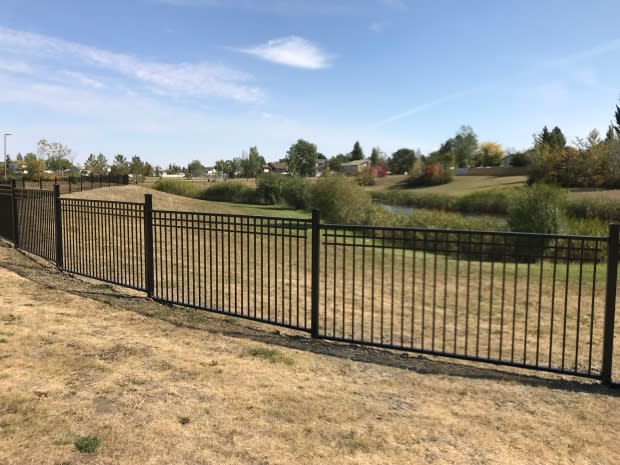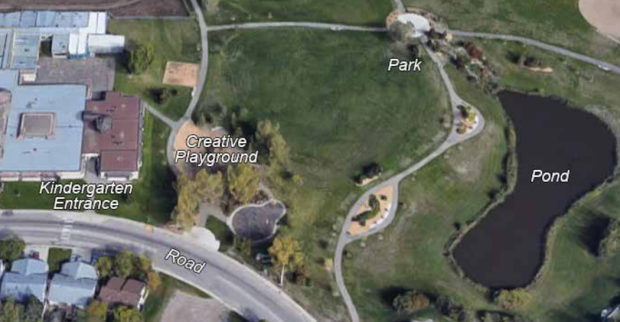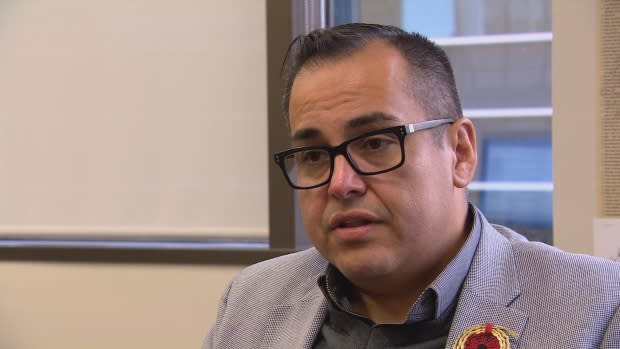Teachers 'warned off' from voicing concerns about pond where kindergarten student drowned 1 year ago: lawyer
A year after the drowning death of a Saskatoon kindergarten student, the lawyer for the boy's family says teachers worried the pond posed a safety risk as far back as 2005 — only to be told by the school board to keep those concerns in check during public meetings about the pond conversion.
Tony Merchant said this week that his early investigation has found that in 2005, when the city-owned pond near Dundonald School was converted from a dry to wet pond, Saskatoon Public Schools "warned off" concerned teachers from voicing their concerns about the conversion.
Twelve years later, on Sept. 11, 2017, five-year-old Ahmedsadiq (Ahmed) Hussein Elmmi drowned in the pond after his educational assistant lost track of him during recess, according to reviews from both the school board and Saskatchewan's child advocate.
"My information is that teachers were told, 'You should not be attending these community meetings, you should not be raising objections,' and that they were not to raise objections on behalf of the community and in that school," said Merchant.
"It was a wrong thing for them to do."
New accusations
Merchant said his new claim is based on interviews with two people who attended the public meetings.
Saskatoon Public Schools spokesperson Veronica Baker said the school board won't comment on the legal action launched in March by Merchant on behalf of Ahmed's parents.

Merchant's latest claim goes above and beyond the broad accusations he lobbed at the school board and the City of Saskatoon in the statement of claim filed last March.
Both organizations have hit back at Merchant's claim that they had "a cavalier attitude [toward] safety" leading to the boy's drowning death, calling the allegations "scandalous, frivolous and/or vexatious."
"Part of what we've discovered since issuing this statement of claim is that commitments that were made to the public [around 2005] have not been carried forward," said Merchant.
"They city advanced there would be the best safety available [including] that you have cement lead-ups in the pond … and you put gravel there so that mud doesn't accumulate. They also indicated that bushes would be cut down and it would be an open pond.
"None of those things have happened."

The city recently installed a 1.5-metre high fence around most of the pond, in time for the new school year.
"While it's probably a good idea to put up a fence, it would be better if the city did what I understand the city committed to do in the first place, which is the best practices on a wet pond," said Merchant.
"The city again extends its deepest condolences to the Elmmi family," city solicitor Patricia Warwick said in a statement to CBC News.
"We understand there remain questions about this tragic incident in our community. Out of respect for the family and the judicial process, these questions will be addressed by the city in court."
"We're still grieving," Ahmed's father, Hussein Elmmi, told CBC News Friday.
"And we're still waiting for answers. That's all I have to say."
A plan that broke down
Both the school board and Corey O'Soup, Saskatchewan's advocate for children and youth, have made a series of recommendations for how to prevent deaths like Ahmed's.
O'Soup's report, released in March of this year, said staff at Dundonald School worked "diligently" to prepare for the arrival of Ahmed, an intensive-needs student diagnosed as autistic shortly before his fall 2017 semester at Dundonald.
He was known to want to run toward water and roads and so was assigned a one-on-one educational assistant (EA), tasked with holding his hand during recess. Ahmed was also supposed to wear a bright safety vest during recess, O'Soup found.

But that plan quickly broke down come morning recess on Sept. 11, 2017, according to what O'Soup heard during interviews with school staff.
The safety vest could not be found, and Ahmed was assigned to a different EA than his classroom one — an assistant who had never dealt with the boy before.
"She recalled [Ahmed's] classroom EA explaining that [he] liked to run to the road and to water, so to make sure she held his hand," O'Soup wrote in his report.
"Beyond this instruction, the EA stated she did not recall receiving information about his diagnosis and associated limitations, about a safety plan, or that [Ahmed] was supposed to wear a vest."
'When Every Second Matters'
During recess, while Ahmed went down a slide, the EA was distracted by another student seeking a hug. That's when he went missing, initiating a frantic search.
Confusion over what he was wearing stymied that search, according to O'Soup's report, titled When Every Second Matters.
"School staff from another class saw a piece of blue clothing in the pond, but at first dismissed it as they were looking for a red vest," O'Soup wrote.

"Shortly after, through further communication, it was confirmed that [Ahmed] was wearing a blue jacket and two staff pulled [him] from the water."
He was pronounced dead at the hospital.
The EA assigned to Ahmed during recess "was placed in an untenable position," O'Soup said.
"Had the EA received a complete briefing about [Ahmed] and fully appreciated the urgency and high risk he posed, the EA may have reacted differently when [he] was able to run to the slide."
Use of tethers increased: school board
In its own March 2018 report, the school board made eight internal recommendations on how to avoid another death like Ahmed's.
It calls for:
Giving kindergarten students their own recess time, at least for an early part of the school year.
Developing formal safety plans for the most "critical intensive-support students" as well as specific plans for students considered to be "runners."
Considering the use of restraining devices, such as gait belts and tethers, for those high-risk students.
"The whole division has reflected on this unfortunate tragedy over the course of the year," said Jaime Valentine, the school board's superintendent of human resources.

Gait belts and tethers were already employed for years.
"But have the numbers of those increased? For sure," said Gail Sajtos, the board's co-ordinator of special education. "And that was implemented immediately last year."
Kindergarten students began taking recess at a separate time from other students last week, Valentine added.
"It's part of tracking and ensuring that they're safe and they understand their surroundings. It's also ensuring the teachers themselves understand all of the children and their proclivities while they're outside playing."
Complex student needs growing
The number of intensive-support students like Ahmed in Saskatoon continues to rise. It stood at just under 1,500 last year — an increase of nine per cent from the year before, and a number that makes up about six per cent of Saskatoon Public Schools' entire student population.
"With the opening of the Children's Hospital [in 2019], we only anticipate that that's going to increase," said Valentine, suggesting that families of students who require supports may move to the city to access services at the hospital.
To address the increase, "we've actually increased the number of EAs in the division by about six per cent this year," he said.
O'Soup made non-binding suggestions for both the school board and Saskatchewan's Ministry of Education in his report, too.
He tasked the ministry with doing a study of "external safety hazards" for all schools in the province and suggested it "create plans to sufficiently mitigate those safety hazards."
Rob Currie, the deputy minister of education, acknowledged "this is a big recommendation."
"We go from some urban centres that have ponds or roadways by their sites to some of our schools in the north that border on a lake or a highway," he said.
That study should be completed by March 2020, he said.

